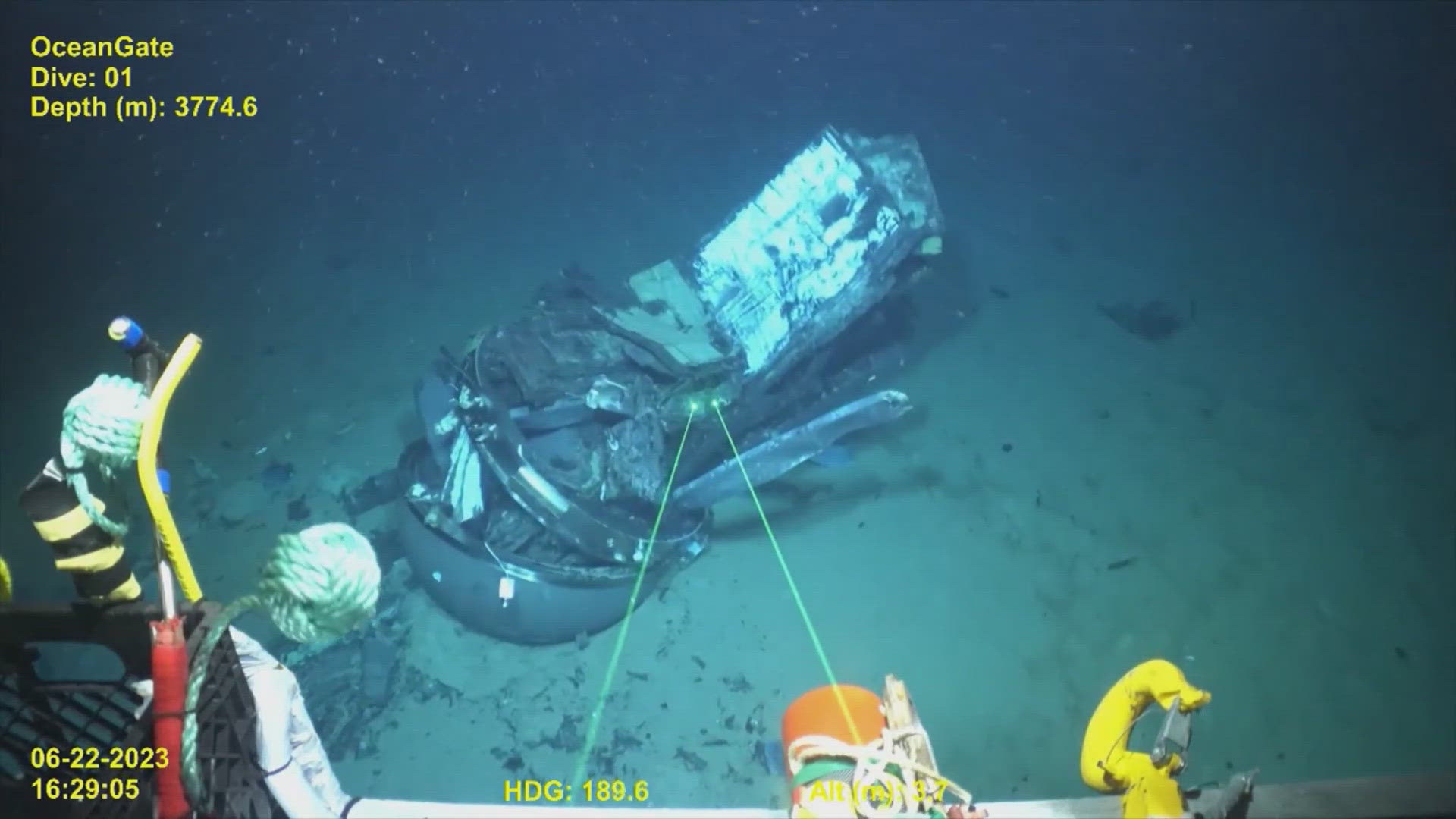EVERETT, Wash. — A Coast Guard investigatory panel is currently hearing testimony on the OceanGate disaster, which claimed the lives of five people aboard the Titan submersible last year.
The submersible, an underwater vehicle with more limited power than a submarine, took OceanGate CEO Stockton Rush, French Titanic Expert Paul-Henri Nargeolet, British adventurer Hamish Harding and two members of a prominent Pakistani family, Shahzada and Suleman Dawood, on a mission to reach the wreckage of the Titanic - but the group never arrived.
All five were killed when the submersible imploded on the descent.
In the year since, reports of dangerous malfunctions, dismissed employee concerns, cut corners and disagreements about fundamental aspects of the submersible's engineering have emerged.
Both OceanGate Expeditions and the Titan submersible have strong ties to Washington state. Here's what we know.
OceanGate Expeditions' headquarters in Everett, ties to UW, WSU and Boeing
OceanGate Expeditions is the company that constructed and operated the Titan submersible. The company, based in Everett, drew on expertise from the University of Washington and Washington State University to help construct its marquee underwater vehicle designed to take paying customers to view the wreckage of the Titanic.
WSU reported in 2018 that a cohort of then-current and former WSU Everett students helped design and implement the Titan's electrical system. Following the subersible's implosion, the school said in a statement to The Spokesman Review that the WSU grads involved with the project left the company in 2019.
The company also touted its relationship with UW's Applied Physics Laboratory in the engineering and design of the Titan - claims the school initially said were overblown in the aftermath of the disaster. However, records from the school reveal that their role in the early stages of the vessel's development.
Records dating back to 2012 show the school pitched itself to CEO Stockton Rush to help OceanGate build a submersible that could explore the deep ocean. The school secured a contract with the company in 2013 and mentioned its partnership with OceanGate in promotional materials through 2016.
By 2017, the relationship between the school and the embattled deep-sea tourism company soured. Emails show that UW engineers and Rush had a disagreement about an aspect of the Titan's engineering. Three of the core UW engineers on the project expressed concern about Rush’s plan to use glass material on a “housing” that would store key Titan equipment outside the sub. They wrote of their worries that the glass material might explode at such extreme ocean depths.
After the 2017 disagreement, UW "relaxed its ties" with the company, but did not completely cut ties or close the door on future collaborations when the contract between OceanGate and the university expired in 2020.
OceanGate also boasted ties to Boeing, saying it used decommissioned carbon-fiber material purchased at a discount from the company in the construction of the Titan submersible, according to reporting from Business Insider. In the aftermath of the implosion, a Boeing spokesperson said they found "no record of any sale of composite material to OceanGate or its CEO."
OceanGate also advertised that the Titan was designed "in collaboration" with the aerospace company in advertisements and on its website, which Boeing also denied.
At least one Boeing engineer is expected to offer testimony at the investigatory hearings.
KING 5's Taylor Mirfendereski contributed to this report.

